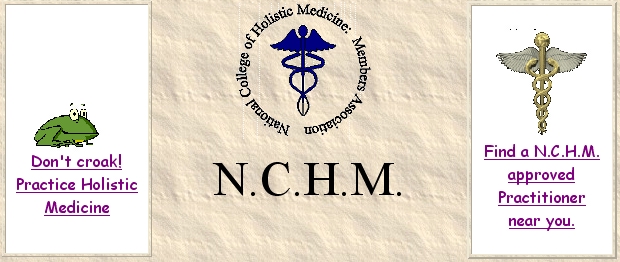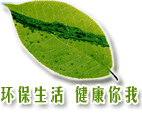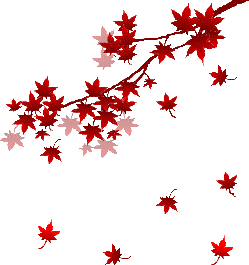以下内容摘自:
英国 National College of Holistic Medicine 国立整体医学学院 的 入门级 芳疗师课程
introduction to 30 of the most well known essential oils 三十种最著名精油之导论
这是NCHM最基础的aromatherapy科目,限于版权,我只能节选部分内容。
如果想去英国读芳疗课程,不妨先体验一下原版教材中的内容

LESSON ONE
Aromatherapy is exactly what its name implies - a therapy (massage) with aroma (essential oils). The essential oils are extracted from plants and trees with properties known to benefit both psychological and physical problems.
The essential oils are absorbed into the body and depending upon their properties, they can soothe, stimulate, heal and beautify. The massage brings about a state of deep relaxation which, along with the inhalation of the scents from the essential oils, gives a sense of well-being.
Besides massage the oils can be added to bath water, used in skin preparations or inhalations. The concentrated oils need to be blended with a carrier oil before they are suitable for direct use on the skin. Carrier oils are cold?pressed vegetable oil. An aromatic bath using a few drops of the appropriate essential oils can be restorative or sedative, can help relieve muscular pain, joint pain, and can reduce stress. The warm bath water helps to open the pores and therefore helps the absorption of the oils, and the steam from the hot water aids the gentle inhalation of the aromatic vapour.
Another method of inhalation uses a bowl of hot water to which a few drops of the appropriate essential oil has been added. The head is covered with a towel and the vapour from the bowl is deeply inhaled. 10 drops of essential oil should be added to 100ml hot water. A few drops of oil can be added to a pillow to aid sleep and the essential oils can be used in compresses to ease muscular pain and bruises.
ESSENTIAL OILS
Essential oils are obtained from the leaves, stems, flowers, roots, sap or bark of certain plants and trees.
An essential oil may have many separate substances - those from flowers being far more complex than those from leaves. Essential oils from flowers have to one hundred components. Some leaf essential oils have only one.
The yields of essential oils vary considerably in different plants, and this is reflected in the price of the oil.
50 kilos of certain lavenders yield approx. 11/2 litres of oil (lavender being one of the most widely used essential oils).
50 kilos of eucalyptus yields approx. 5 litres of oil.
50 kilos of certain varieties of rose petals may yield only 1/4 litre of oil.
The chemical composition of the oil changes according to the time of day and the season of the year. It is, therefore, important to gather the plants and flowers at exactly the right time in order to obtain the maximum yield of oil of the highest quality. (The better the quality of essential oil, the better the results when that oil is used in aromatherapy. The more an oil is adulterated the less its therapeutic power). Some flowers have a heavier aroma, and higher yield of essential oil, at sunset. Other plants blossom throughout the year, but in certain months of the year the flowers yield a higher percentage of essential oil.
Some producers of essential oils distil plants like lemongrass in portable copper stills in the places where the plants are actually growing in order to obtain the maximum yields of oils.
These factors along with the differences of soil conditions, soil quality, and climatic variations in different countries, and the amount of oil present in the plant, will determine the ultimate value of the essential oils obtained. For these reasons English Lavender, French Jasmine and Arabian Rose are the most expensive oils of their type.
The essential oils are not used in their concentrated state but are mixed with a base oil such as grape seed oil, and the strength at which they are used is very important. They can have very adverse effects if used in excess. It is always very important to use the correct concentrations of essential oils. Essential oils should always be treated with respect, and should never be used in excess. (The quantities for use are given later).
History
Massage with aromatic oils can be traced back to the Ancient Egyptians and before it was discovered how to obtain oils by distillation, the oils were extracted by squeezing with the hands known as Expression or by Enfleurage or Masceration.
Enfleurage is a method of extracting oils from flowers by placing the flower heads on a glass sheet covered with purified fat. The fat then absorbed the essential oils, the used flower heads were removed and a new covering of flowers laid on, and the procedure repeated until the fat was saturated with essential oil. This fat could be used as a perfume or ointment and is called "pomade". The Ancient Egyptians were particularly fond of this type of perfume and traces have been found in perfume jars in their tombs. In some tomb paintings high?born ladies are shown at banquets in their elaborate wigs topped with strange conical shapes. Some experts believe these cones to be cones of perfumed fat which, during the course of the banquet melt in the heat and release their fragrances.
Enfleurage is still used as a method of extraction but the pomade is then dissolved in alcohol. The fat content is insoluble in the alcohol, whereas the essential oils readily dissolve into it. The alcohol containing the oil is then heated, the alcohol evaporates first leaving the pure essential oil.
Masceration is very similar to enfleurage but the flowers or leaves are first crushed to rupture the oil cells, before adding them to vegetable oil or purified fat, which is then put into a warm place and allowed to absorb the essential oils. The process is repeated until the oil or fat is saturated with the essential oils. The saturated vegetable oil can be used for massage and the saturated purified fat can be treated with alcohol in order to obtain pure essential oils as in enfleurage.
The method most used today is steam distillation and this method is thought to have been discovered in the 11th century by an Arabian physician named Avicenna, although the earliest known written description of the process was by a Spaniard, Amaldo de Vilanova, in the 13th century.
Essential Oil-Purity
So we see that many plants yield their essential oil by steam distillation, expression, enfleurage and masceration.
However with some plants and with gum from trees, the process is a little more complex. A vacuum, still using a volatile solvent in a closed apparatus yields a solid called a "concrete". This consists of essential oil, natural waxes and colour. The concrete is then mixed with alcohol to remove the waxes, and this leaves a thicker liquid called "absolute". These absolutes have a wonderful scent and are very expensive, but are not necessarily the best oils.
For example:
Rose Otto (Attar of Roses) is obtained by steam distillation and is almost clear.
Rose Absolute (also called Rose-de-Mai or Rose-de-Grasse) is usually browny-yellow in colour, but Absolute oil, unless produced very skilfully, can have some of the alcohol left in it and, therefore, is an adulterated oil.
The Rose Otto may have a slightly less heady aroma and could well be more expensive than Rose Absolute ? but Rose Otto is considered to have a better therapeutic effect. Only the best quality Rose Otto should be purchased as it can be adulterated by the skilful addition of inferior oil or synthetic substances.
Blends are made from various oils mixed together, or by synthetic materials added to oil to improve the scent or make the cost cheaper. These are adulterated oils and although quite suitable for perfumery, they are too inferior for therapy. Only the purest oils should be used.
For example, Rosemary - if a producer wishes to enhance a poor crop of rosemary he can adulterate it by adding camphor oil, which will "improve" the smell of the rosemary.
"Blends" are the adulterated oils and are not suitable for Aromatherapy and should not be confused with the ready mixed essential oils with carrier oil which can be purchased from quality Aromatherapy Suppliers.
These ready mixed oils should be used up quickly as they do not keep as long as the pure essential oils, and it is probably better to mix your oils immediately before use and to use them in their freshest form.
Carrier Oils
We need to use something to help our hands flow over the skin being massaged, and for aromatherapy we use an oil which will "carry" the chosen essential oils through the skin. It is essential that a pure, high quality, vegetable oil is used to maximise the penetration of the essential oils into the skin. (Mineral oil is useless because it has a very low penetration power). You only need to use sufficient carrier oil to be able to glide smoothly over the skin without making the surface of the skin too slippery. All carrier oils must be pure, unrefined oil and usually the purer it is, the more expensive, and the better the keeping quality.




 加好友
加好友  发短信
发短信
 芳香疗法师
芳香疗法师
 Post By:2004-9-7 13:32:20 [只看该作者]
Post By:2004-9-7 13:32:20 [只看该作者]


 加好友
加好友  发短信
发短信

 Post By:2004-9-7 15:55:00 [只看该作者]
Post By:2004-9-7 15:55:00 [只看该作者]



 加好友
加好友  发短信
发短信

 Post By:2004-9-8 15:49:48 [只看该作者]
Post By:2004-9-8 15:49:48 [只看该作者]



 加好友
加好友  发短信
发短信
 芳香疗法师
芳香疗法师
 Post By:2004-9-9 9:40:53 [只看该作者]
Post By:2004-9-9 9:40:53 [只看该作者]



 加好友
加好友  发短信
发短信
 芳香疗法师
芳香疗法师
 Post By:2004-9-9 10:09:54 [只看该作者]
Post By:2004-9-9 10:09:54 [只看该作者]



 加好友
加好友  发短信
发短信
 芳香自然
芳香自然
 Post By:2004-9-9 10:31:37 [只看该作者]
Post By:2004-9-9 10:31:37 [只看该作者]




 加好友
加好友  发短信
发短信
 芳香疗法师
芳香疗法师
 Post By:2004-9-9 12:37:05 [只看该作者]
Post By:2004-9-9 12:37:05 [只看该作者]



 加好友
加好友  发短信
发短信

 Post By:2004-9-9 13:43:29 [只看该作者]
Post By:2004-9-9 13:43:29 [只看该作者]




 加好友
加好友  发短信
发短信

 Post By:2004-9-9 16:08:17 [只看该作者]
Post By:2004-9-9 16:08:17 [只看该作者]




 加好友
加好友  发短信
发短信

 Post By:2004-9-22 11:21:10 [只看该作者]
Post By:2004-9-22 11:21:10 [只看该作者]
